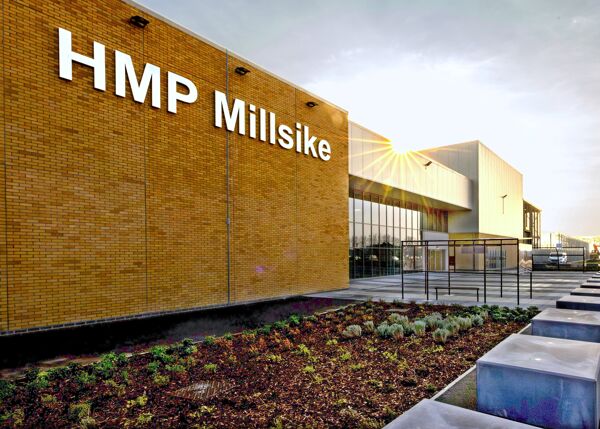
NEC Users’ Group platinum member Highways England has used NEC for the challenging conversion of an 18 km stretch of the M23 motorway south of London into an all-lane-running smart motorway. Originally built in 1975, the M23 is a crucial part of England’s 7,000 km strategic road network, connecting London to Gatwick airport, Britain’s second busiest, and to the coastal resort of Brighton. The section between junction 8 with the M25 London orbital motorway and junction 10 at Crawley south of Gatwick is particularly busy, especially during holiday periods, and carries an average of 180,000 vehicles a day.
To improve safety and reduce congestion and journey times, Highways England decided to convert the existing dual three-lane motorway and its hard shoulders into a dual four lane, all-lane-running smart motorway as part of its nationwide smart motorway programme .
It let the £164 million scheme to Kier Highways in February 2018 under an NEC3 Engineering and Construction Contract Option C (target contract with activity schedule) via its 2014−2019 NEC-based Collaborative Delivery Framework (CDF). NEC project manager Corderoy and joint-venture designers Jacobs and Atkins were each engaged under an NEC3 Professional Services Contract (PSC).
The work primarily involved converting the existing northbound and southbound hard shoulders between junctions 8 and 10 to permanent running lanes, and installing new overhead gantries equipped with variable message signs, signals and closed-circuit television cameras. A total of 12 new emergency areas were installed at the edge of the motorway and a new reinforced concrete barrier was built in the central reserve.
The westbound hard shoulder of the 1.5 km dual-two-lane spur from junction 9 to the airport was also converted to a running lane, and a new dedicated northbound slip road was built before junction 9. Also included were earthworks, retaining walls, noise barriers, fencing, landscaping, emergency telephones, improved access to Weatherhill depot and a new emergency turn-around facility in Coopers Hill Road.
The new lanes opened to 50 miles per hour (80 km/h) running in April 2020 and then to the national speed limit of 70 miles per hour (110 km/h) in September 2020. Final fencing, re-planting and snagging was completed in November 2020, and the scheme was shortlisted for the Transport Project of the Year in the 2020 British Construction Industry Awards.
NEC Frameworks
The M23 project along with a similar project on the M20 between junctions 3 and 5 was let to Kier through lot 3a of Highways England’s £5 billion, five-year, CDF, which was awarded to 26 firms in November 2014. All contracts in the scheme were let using NEC3 contracts.
The CDF was replaced in 2019 with the £9 billion, five-year, NEC4-based Regional Delivery Partnership, while future smart motorways were let separately as the £7 billion, 10-year Smart Motorways Programme Alliance based on the NEC4 Alliance Contract (ALC).
Highways England project manager David Macleod says, ‘NEC is Highways England’s standard model form of contract for construction works and professional services, and has been since the launch of NEC in the 1990s. NEC is a collaborative project management process and is now the construction industry standard, being widely used by the whole supply chain.’
He says in line with the NEC obligation for parties to act in a ‘spirit of mutual trust and co-operation’, there was strong collaborative ethos through the works, including with major stakeholders such as Gatwick airport, Network Rail and Surrey and West Sussex councils.
‘All issues potentially affecting the safe and successfully delivery of the works were quickly flagged up and resolved through NEC early warnings and risk reduction meetings. Safety was our number one priority, and there was only one reportable accident in over two million person-hours worked. A crawler crane driver was injured jumping out his cab, which quickly led to the manufacturer fitting a failsafe device to all similar cranes.’
Macleod says the collaborative environment also led to a number of innovative solutions being adopted. ‘These included the first use of modular block retaining walls on Highways England’s network, a standardised gantry solution that we can use on future schemes, solar-powered mobile barriers and extensive use of hybrid and electric plant.’
However, he says the unprecedented challenges of widening such a busy motorway through designated areas of great landscape value eventually lead to the ECC Option C pain threshold being breached to a point where it was 100% client risk.
‘At this point the NEC pain/gain share incentive to reduce cost and deliver to time was no longer working for either party, so we mutually agreed toward the end of the works to change the contract to fixed lump sum. This allowed the financial incentive to be reset, and the contractor went on to complete the project on programme and well within our original £211 million upper estimate at tender stage.’
Benefits of using NEC
- NEC provides a collaborative project management process for both works and services that was familiar to the whole supply chain.
- NEC obligation to act in a ‘spirit of mutual trust and co-operation’ led to strong collaboration between parties and with major stakeholders.
- NEC early warning and risk management process ensured full transparency of issues and costs, as well as encouraging safe working and innovation.
- NEC flexibility enabled the original target cost approach to be converted to a fixed lump sum to reset incentivisation when pain-share cap was reached.
By Simon Fullalove




